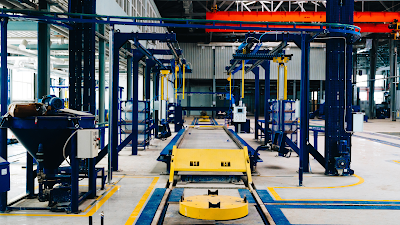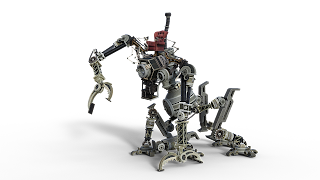You’ve probably heard that automation technology has its advantages, but you may not be aware of the disadvantages it can have, as well. This article outlines seven disadvantages of automation that may surprise you and help you make more informed decisions about your own use of this valuable technology. While the potential benefits are worth it in the long run, they come with some pitfalls you should be aware of beforehand. Here are seven to keep in mind as you plan your next automation project at work or at home. In this blog post we will first see what is automation and then we will dive into the disadvantages of automation.
Table Of Contents
- What is Automation?
- Cost of automation is high
- Automation reduces human skills and initiative
- Workers are disadvantaged
- Algorithm Issues
- Misuse of Technology
- Not Understanding Local Culture
- Legal Concerns
- Conclusion
What is Automation?
In business, automation is the use of technology to complete tasks without human intervention. By automating processes, businesses can increase efficiency and productivity while reducing costs. However, there are some disadvantages of automation that you should be aware of before implementing it in your business.
7 disadvantages of automation are discussed below:
1) Cost of automation is high
The cost of automation is often high. This is because the machines and software required to automate a process can be expensive. Additionally, the training required to use these tools properly can also add to the cost. These high costs can often dissuade businesses from automating their processes.
The cost of automation can vary significantly depending on a number of factors. The size and scope of your business will affect how much it costs to automate a process. Additionally, if you already own some hardware or software that you can use in an automated process, you might not have to pay as much for new equipment. Once again, training costs will also play a role in determining overall automation costs.
Automation can be a costly endeavor, especially if you need high-tech equipment and maintenance. Several factors contribute to this high cost:
- Cost of Equipment - The equipment itself is expensive, but it's also important to consider how much each piece costs. For example: if you want an industrial robot with multiple arms and grippers, it will run around $50K-$75K USD (USD). Then there's all those sensors that need installing onto your machine as well! And don't forget about training time too—it takes some time until employees learn how best use these machines in their daily tasks.
- Cost Of Maintenance - With constant use comes wear and tear on everything from motors down through even belts (which could break). This means more frequent maintenance checks needed by both humans and robots alike; however if done correctly this shouldn't impact productivity too much because repairs aren't usually very expensive compared with other parts like tires or brakes which may need replacing every couple years depending on usage frequency/seasonality etc...
2) Automation reduces human skills and initiative
One of the disadvantages of automation is that it can lead to less creativity. When people are used to machines doing certain tasks, they may become less likely to come up with new and innovative ideas. Additionally, automating processes can also make it more difficult to change course if something isn’t working well. It's much easier to just tweak a manual process than automate one. In general, there's no perfect way to do things. Automation can be great in some situations but not in others. For example, it can save time on repetitive tasks or when an employee is out sick. However, if you're using automation as your only strategy for growth, you'll find yourself in trouble.
Automation reduces the need for human skills, initiative and creativity. It also reduces innovation, problem solving and the creation of new processes. This can have a negative impact on efficiency, effectiveness and profit margins.
Automation is often used in areas where customer service is important as it enables companies to provide better service at lower cost by reducing their staff costs (e.g., call centres). However this does not necessarily mean that automation has been introduced successfully; some examples include problems with customer support such as poor communication or high waiting times because there are too many calls being handled by one person who cannot cope with all requests satisfactorily within an acceptable timeframe.*
3) Workers are disadvantaged
When a company automates its processes, it typically requires fewer workers to get the job done. This can lead to downsizing and layoffs, which can be devastating for workers who are suddenly out of a job. In addition, automation can lead to increased income inequality as those who keep their jobs see their wages increase while those who are laid off struggle to find new employment.
Automation can be a great thing. It can make our lives better, easier and more efficient. The problem is that it also has its downsides. One of the biggest disadvantages of automation is how it affects workers who are displaced by new technology or policies that shift jobs away from them. Workers lose their jobs and often find themselves without any source of income at all—they may even be forced into retraining programs or unemployed altogether if they don't have enough skills to fill the void left by their former occupation.
The lack of employment opportunities due to automation has been widely documented over time; however, there's another way in which this process hurts us as individuals: unemployment rates rise significantly after industries begin replacing human workers with robotic ones (this trend is called "jobless growth").
4) Algorithm Issues
One of the disadvantages of automation is that it can lead to algorithm issues. This means that a computer program is making decisions based on a set of rules, and if those rules are flawed, the decisions will be too. This can have disastrous consequences, as we've seen with things like the stock market crash of 1987 and the 2016 US Presidential election. Furthermore, algorithms often make biased decisions because they're programmed by people who might have prejudices. For example, automated hiring systems could discriminate against female applicants because they're not programmed to take their qualifications into account. The system might be more likely to pick male candidates because there's no requirement for them to list any childcare responsibilities or caregiving needs. If these types of requirements were taken into account, female candidates would get a fairer chance at getting the job. Another issue with algorithms is that humans cannot know what goes on inside them. Algorithms are designed in a way so that programmers cannot see how the decision was made and therefore can't fix it when something goes wrong. As well as this, computer programs are vulnerable to bugs - errors in code which cause crashes. These crashes can affect everything from mobile phones to nuclear power plants, potentially causing an enormous amount of damage and threatening human lives.
5) Misuse of Technology
One of the disadvantages of automation is that it can be misused. For example, if a company implements an automated system to keep track of employee productivity, but then uses that data to micromanage and punish employees, it's not being used correctly. The technology should be used as a tool to help employees, not as a way to control them. In order for companies to take advantage of what automation has to offer, they need to use it in the right way so that people are still treated fairly. There is always going to be somebody who wants to misuse the technology for their own personal gain or profit. When this happens, managers have to step in and put boundaries on how these systems are used. They also need to make sure that no employees are punished unfairly because of how the system works. If anything, they should reward employees when they show high levels of productivity so that everyone stays motivated. It's important for everyone in the organization to be aware of what is happening with automation within their company and know when to intervene when necessary. Employees will inevitably get frustrated when they feel like they're stuck in automated prison. Managers will have to work hard to alleviate some of those frustrations by giving workers more autonomy over the tasks that they do. They might even want to introduce different types of incentives and bonuses into the equation so that everybody feels appreciated, which could motivate them even more than before.
6) Not Understanding Local Culture
When you're planning to do business in another country, it's important to be aware of the local culture and customs. Otherwise, you risk offending your potential customers or partners. Additionally, you may not be able to effectively communicate your message if you're not familiar with the local language. Furthermore, there are risks when employing overseas staff like lost productivity due to higher rates of absenteeism or training difficulties because employees don't speak English. Finally, automated machines aren't compatible with some environments where locals have disabilities that prohibit them from using a computer mouse. For example, people who live in areas where electricity is limited might not be able to use touch screens. In other areas, cultural norms dictate that computers must remain stationary while they're being used, which makes motion sensors difficult to use. If you've deployed automation without taking these things into consideration, then you'll need to spend time figuring out how to make it work for the people in your target market.
7) Legal Concerns
One big disadvantage of automation is the potential legal implications. If a machine makes a mistake, who is responsible? The owner of the machine? The programmer? The company that sold the machine? These are all questions that need to be considered before automating any process. Also, if you automate something and it doesn't work out well in your business you may have created a safety issue with something else by taking the time away from it. For example, if you automate sales and your buyers start getting cold-called by other companies' sellers as a result then now they're not able to take care of their original responsibilities which could lead to losses on their end. There's also the question of when does a robot become conscious? As AI becomes more advanced and robots can do more things, it will get harder to distinguish what tasks should be done by humans versus what tasks should be done by machines. Some people fear that we might lose our jobs as more jobs are replaced by robots, while others argue that this type of technology will only make life easier for us. It's unclear how these arguments will pan out but it's an important topic to keep an eye on so we can adjust accordingly.
Conclusion
Automation is beneficial for businesses because it gives them the opportunity to grow and increase their profits. However, it can also be detrimental if they do not keep in mind that human beings are still the ones who make decisions and take action on behalf of their company. Too much reliance on technology can lead to errors and mistakes that could have been avoided if we had thought twice before making use of technological advancements in our daily lives.




0 Comments